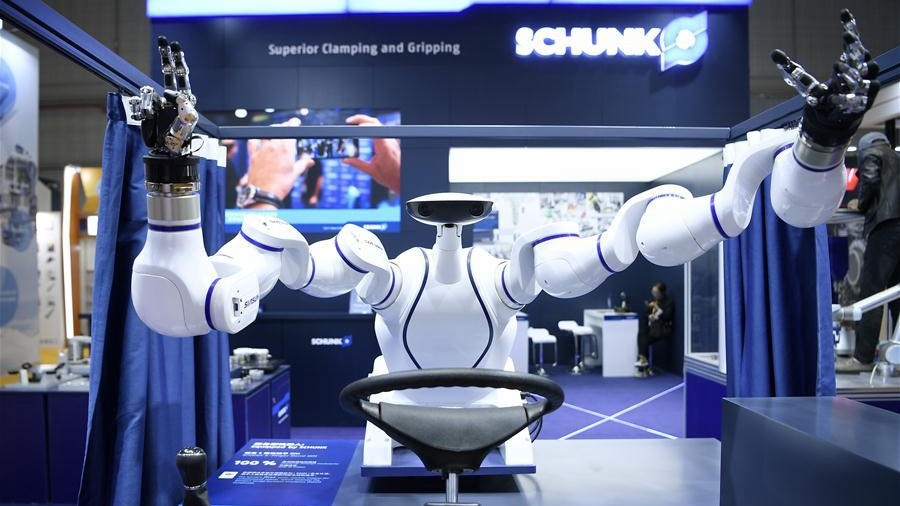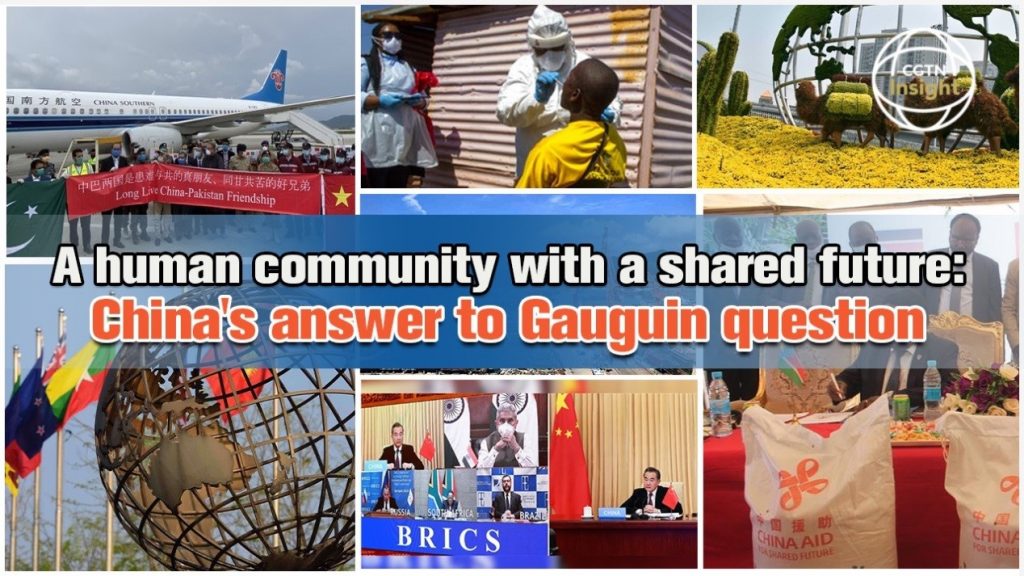By Professor Wang Yiwei– CGTN Insight
“Roots of China’s Growth” is a 10-episode series marking the centenary of the founding of the Communist Party of China (CPC), which has presided over the country’s meteoric rise as a global power. The series focuses on 10 fundamental elements of the strategy that has led to China’s transformation from an impoverished nation over the past 100 years. The “human community with a shared future” is the third in the series. The article is part of a Special Series from CGTN and its international media partners.
In a painting he considered a masterpiece, French Post-Impressionist artist Paul Gauguin (1848-1903) presented the life cycle of human beings with a dreamlike and poetic approach. The 4-meter canvas painting begins with a baby on the right and ends with a shriveled old woman on the left. The plants, including trees, flowers, grasses, and fruits, represent the fleeting of time and the fading of life. The title of the painting asks three soul-searching questions: Where Do We Come From? What Are We? Where Are We Going?
How China sees it
President Xi Jinping provided China’s answer to Gauguin’s questions in a UN speech on January 18, 2017.

Chinese President Xi Jinping addresses the UN Sustainable Development Summit 2015 at the UN headquarters in New York, September 26, 2015. Photo by Xinhua
“Pass on the torch of peace from generation to generation, sustain development and make civilization flourish: this is what people of all countries long for; it is also the responsibility statesmen of our generation ought to shoulder. And China’s proposition is: build a community of shared future for mankind and achieve shared and win-win development,” Xi said.
A human community with a shared future is not like the European Community. It belongs to the entire human race, respects sovereignty, and rejects an unequal system in which the weak depend on the powerful. China’s notion of such a community combines the Western concept of destiny that stresses inevitability and the Indian (Buddhist) concept of destiny (pratītyasamutpāda) that tilts towards fortuity.
Autonomy is a prerequisite to such a community. Based on this, it transcends differences in national interests. Common interests follow common responsibilities that lead to a shared future.
How reshaping can take place
Peter Thomson, the 71st president of the United Nations General Assembly, told Xinhua in 2012: “Building a community of common destiny for mankind to me is the only future for humanity on this planet.”
Why?
Human beings are living in an interconnected world. As we head towards an age defined by the Internet of Everything (IoE), new spheres of exploration such as artificial intelligence (AI), the deep sea, internet and outer space should no longer be governed by old geopolitical and zero-sum rules, nor should they contradict core human values. Technological revaluation is profoundly transforming the pattern of global interactions, reshaping political and economic systems, and even redefining humanity.
In a decentralized world, human beings need a guiding principle to help them build peaceful and prosperous lives. This is where the concept of a human community with a shared future comes into play.
In a nutshell, the concept includes three missions:
First, to advance the common development of our world, promote the common revival of human civilizations and unite peoples across the world as one.
While the concept of the “Chinese nation” integrates philosophies running through Chinese civilization, the concept of a human community with a shared future illustrates China’s ties with the world, integrating the Chinese dream into the world dream.
President Xi asserted that “China’s proposition of building a human community with a shared future is not diplomatic rhetoric. It is essential to the fulfillment of the Chinese dream and the rejuvenation of the Chinese nation.”

The first shipment of 200,000 doses China-provided COVID-19 vaccine arrived at the Robert Mugabe International Airport, Harare, Zimbabwe, February 15, 2021. Photo by CFP
Second, to offer Chinese wisdom and a Chinese solution to problems facing humankind. Under this concept, autonomy over destiny transcends core-periphery dependency, common destiny trumps interdependency, and the notion of a human community with a shared future prevails over paradoxes, such as the one between economic globalization and the politics of localization.
Today’s world is undergoing profound changes not seen in the previous century. While the COVID-19 pandemic has posed a formidable challenge to the world, the collaboration between countries to fight it is a vivid example of how we pursue our shared future.
Public good and community building
Third, to answer the question “are we heading towards a better future.”
The dawning of a new era defined by AI and IoE makes the leap from cultural exchanges to innovation possible. This paves the way for a future where the theory of linear evolution is out of place, Western-centrism is rejected, and anthropocentrism no longer holds sway. These are the core ideas at the heart of a global community with a shared future.
In stark contrast to dated mentalities governing international relations, China is destined to develop its vaccines as a global public good and make them more accessible and affordable to developing countries.
As noted in the white paper “China and the World in the New Era,” building a community with a shared future does not mean all nations conforming to the same values or the universal implementation of unilateral proposals pushed by one country or small minority of countries. Nor does it mean the establishment of a single unitary actor around the globe, or the replacement of one system or culture by another.
Rather, it calls for countries with different social systems, ideologies, histories, cultures, and levels of development to align their goals and interests, enjoy equal rights, and share all responsibilities in international activities for the progress of humanity.
Building such a community is not a hollow slogan, but achievable through the progression of the Belt and Road Initiative (BRI), the formulation of a new form of international relations, and the creation of a global connectivity partner network. The interconnection of human beings accentuates active control, rather than passive acceptance over human destiny.
The author is Professor Wang Yiwei, vice president of the Academy of Xi Jinping Thought on Socialism with Chinese Characteristics for a New Era, director of the Institute of International Affairs at Renmin University of China, and a senior fellow and board member of the Global Engagement Academy, Shandong University (Weihai). You can contact him directly at yi*******@*****du.cn. Please send any other contributions, including expressions of interest in sharing expertise with us, to op******@**tn.com.




